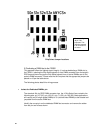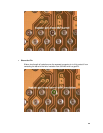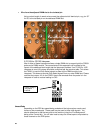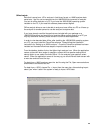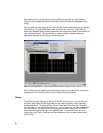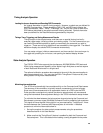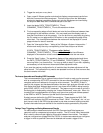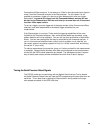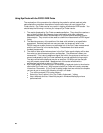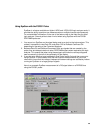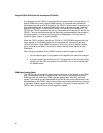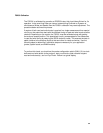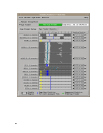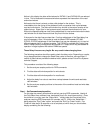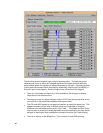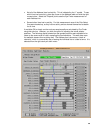29
Using Eye Finder with the FS2331 DDR Probe
The explanation of the procedure for calibrating the probe for optimal read and write
state acquisition provides a description of some useful ways you can interpret Eye
Finder results. Eye Finder can be very useful in helping characterize DDR busses. You
should keep the following in mind as you interpret Eye Finder results:
1. The results displayed by Eye Finder are not quantitative. They should be used as a
way to identify signals that deserve closer examination with other calibrated
parametric tools (such as an oscilloscope) or to find the optimal sampling time for
state analysis. They should not be used as a definitive measurement of DDR signal
timing.
2. The absolute accuracy of the position of the data valid window is not specified or
guaranteed. Relative positions are more accurate, but skews will exist in the
FS2331/analyzer system that are not calibrated out of the Eye Finder measurement
and thus will show up in the results display. These skews could total several
hundred picoseconds.
3. The width of data valid windows shown in the Eye Finder results display will be less
than what you would measure with an oscilloscope. The difference is about one
nanosecond. This is due to additional signal jitter within the analyzer as well as an
amount subtracted by the Eye Finder software to provide additional timing margin.
The data valid window displayed may be as small as 100-200ps yet the analyzer
may still properly sample data. Measurement of the actual window with a
oscilloscope may show an eye of 1.25ns or more.
4. Eye Finder speed is a direct function of the density of analysis clocks in the stimulus
used while Eye Finder runs. With frequent clocks Eye Finder will usually complete
in less than 15 seconds. If Eye Finder is taking longer than two minutes to complete
you can do one or more of the following to help it run faster:
•
Turn off the external CPU cache memory
•
Select the "short" option in the "Eye Finder->Advanced..." dialog
•
Use a different stimulus. Video files played in Windows Media player have
performed well.



